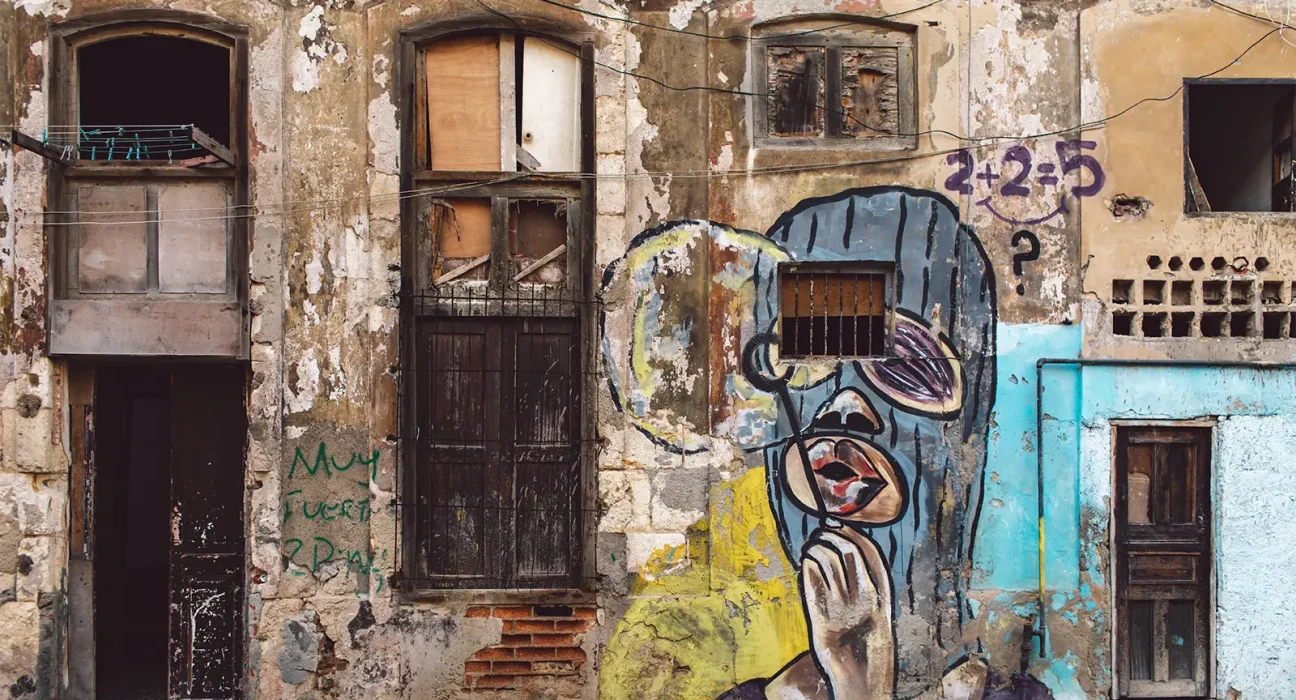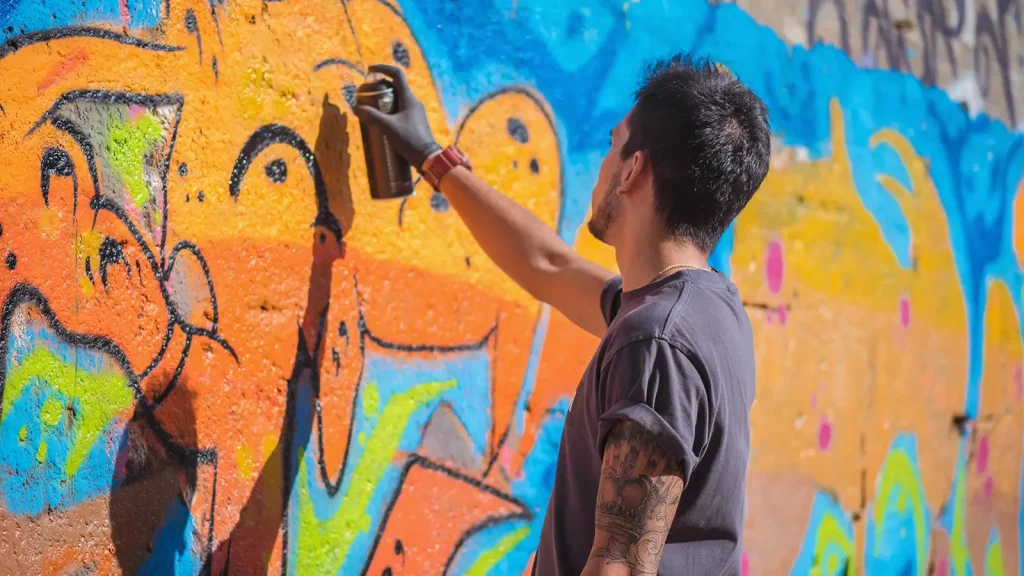Street Art and Graffiti: From Rebellion to Art Form

What was once acts of vandalism, street art and graffiti have evolved into popular forms of art to which the majority of the world is accustomed. From political messages to abstract expressions, street art has transformed into one of the most dynamic facets of urban culture and has redeveloped the way we view public space and art itself. This paper discusses the path that street art and graffiti took from rebellion into popular and recognized art and tries to explain how these forms of urban arts will go on influencing contemporary culture.
Street Art and Graffiti: Origins
Street art and graffiti originally begin with mankind and civilization. Forms of early graffiti included inscriptions and drawings on walls and were done for numerous reasons in places such as ancient Egypt, Greece, and Rome. Most of these early markings were reflections of personal expression or political views, just as much of the graffiti is today.
- Early Graffiti in the Modern Era: The Graffiti movement, as we know it, was born in the 1960s and 1970s of Philadelphia and New York. Artists, dubbed “taggers,” utilized spray paint and markers to sign their names or signature, known as “tags,” on public surfaces, creating an underground culture of self-expression.
- Political Roots: Most of the early graffiti artists used their work to protest against social and political issues. The Vietnam War, civil rights movement, and economic inequalities fueled messages of resistance. Graffiti became the voice of the oppressed, one avenue of expression for those disassociated with mainstream culture.
In their earliest incarnations, graffiti were often about protesting and claiming the streets back—a notion that would take hold and define the nature of street art for many years to come.
Street Art vs Graffiti: What’s the Difference?
While the terms “street art” and “graffiti” are very much used interchangeably, they refer to different styles and intentions.
- Graffiti: Graffiti is usually designed with a focus on word imagery in either the form of tags or “wildstyle” letters. The lettering of graffiti is complicated; its origins are from the tagging culture, which began in the 1960s. Graffiti tends to be more invasive usually, regarding personal expression, and sometimes could be labeled illegal.
- Street Art: The latter is a broader range of styles, from murals to stencils to stickers to installations. While it too can carry political or social messages, street art is often more image-driven, created for the visual appeal to the public. Street art also tends to be more commissioned and legitimized as art, by galleries and museums.
Today, the dividing line between graffiti and street art has become very hazy, with influences on each other’s styles and sharing the same public places to create dynamic and expressive works.
The Evolution from Vandalism to Art
Street art has undergone a sea of change over the decades, morphing from a subculture of rebellion to a respected art form unto itself. This is in no small measure due to changing public perception and pioneering artists.
- Gallery Notice: Due to the fact that in the 1980s, Jean-Michel Basquiat and Keith Haring were some of the rare individuals who connected street art to the formal art world. Their work, usually done in public areas, began to find their ways into the galleries and were legitimizing graffiti and street art into mainstream culture.
- The Rise of Street Art Festivals: Events such as POW! WOW! in Hawaii, Upfest in the UK, and Nuart Festival in Norway now celebrate street art by inviting artists from all over the world to create works in public space. These types of festivals have succeeded in changing the public’s perception and urban spaces into open-air art galleries.
- Commission and Corporate Sponsorship: Companies and organizations have started commissioning street artists to create public murals for advertisement purposes. This has brought several street artists into the limelight with their work and added an artistic vibrancy to cityscapes.
Today, cities like Berlin, New York, and São Paulo are synonymous with street art, attracting tourists and art enthusiasts alike from every part of the world.

Popular Street Artists Who Changed the Face of Urban Art
A few street artists have been instrumental in popularizing urban art styles and pushing them into the mainstream. A few of the important figures to know about are:
- Banksy: Banksy arguably is the most famous street artist in the world, with his politically charged stencils having captured the world’s attention. His anonymity further adds intrigue to him and to works that use consumerism, war, and surveillance as their subjects. Art by Banksy has been challenging conventional views on ownership, value, and the role that art should have in public space.
- Shepard Fairey: Creator of the “OBEY” Series, and more recently, designer of the “Hope” poster for Barack Obama’s presidential campaign, Fairey built his career through building a body of work that used street art to incite social and political change. His work effectively melds elements of pop culture with a vigilant political activism, and he is generally regarded as instrumental in bringing street art into political discourse.
- Jean-Michel Basquiat: After starting his career as a graffiti artist in New York City using the pseudonym “SAMO,” Basquiat became known for his explicit style, joining text and image together with symbolism. In his work, he documented the history of racial encounters and identity, along with social class, leaving his legacy permanent in both street and contemporary art.
These, along with many more, have lifted street art to a different level and made it an honorable art form that fetches high prices in auctions and sees celebrations in exhibitions all over the world.
Social Impact of Street Art
Street art is more than just visual expression; it creates a major social impact, making awareness about the issues and transforming the public spaces.
- Community Identity and Pride: Street art is seen to reflect the peculiar culture, history, or struggle of a neighborhood; in turn, it creates pride and identity in its citizens. Murals and street art will be one form of cultural celebration when art resources are at an extremely low level within a community.
- Social and Political Commentary: Street art becomes an outlet for political and social commentary on issues that may not be readily or aggressively discussed in popular media. It’s a medium which can stir a conscience, question authority, and bring awareness to such issues as poverty, climate change, and equality.
- Transfiguration of Urban Space: Street art changes the outlook of urban space by painting the dingy walls into colored artworks. Many dull and ignored aspects of a city or town often receive a facelift in the form of tourism and new business ventures as artists cover the walls with breathtaking murals, facilitating economic and cultural development.
By beautifying the public sphere, street art converts cities into stimulating, free open-air galleries and allows for public discussion on collectively held views and issues.
The Challenges Before Street Art Today
But with increasing popularity come some challenges for street art in an increasingly commercial and regulated urban space.
- Legal Problems: While commissioned street art is legal, unsanctioned graffiti and murals remain illegal in many places. Artists may get fined or even jailed once they are caught creating unapproved works, limiting their creative free-will.
- Gentrification: This is sometimes the case with street artworks, which, with hip murals and art-filled neighborhoods, attract higher-income individuals and developers. The result of this has nearly always been increased rents in an effort to push out longtime residents and change the makeup of the communities.
- Commercialization: As street art is increasingly used by companies for brand identification, some say it is losing its original rebelliousness. Commercial commissions support artists financially, but they also tend to obliterate the boundary between art and advertising.
These challenges reflect the complex relationship of street art to the contemporary urban landscape where the legality of art meets commerce.
Conclusion
Street art and graffiti have come quite a way from their humble beginnings, causing rebellion on city walls. Today, they are lauded forms of art that question societal norms, galvanize communities, and add vibrancy to the urban cityscape. From political statements to community expressions and pure aesthetic pieces, street art is playing an indispensable role in modern culture.
From vandalism to recognized art, the journey itself is a function of a changing society that embraces diverse voices and creative freedom in public space. Street art remains ever-evolving with the invitation to artists and viewers alike to explore its many complexities and effects. In a world where art was once confined to galleries and museums, street art and graffiti stand in reminder of boundless creativities adding color and meaning to the places we live and visit.
Read also: How Practicing Mindfulness Can Enhance Your Physical and Mental Well-being











